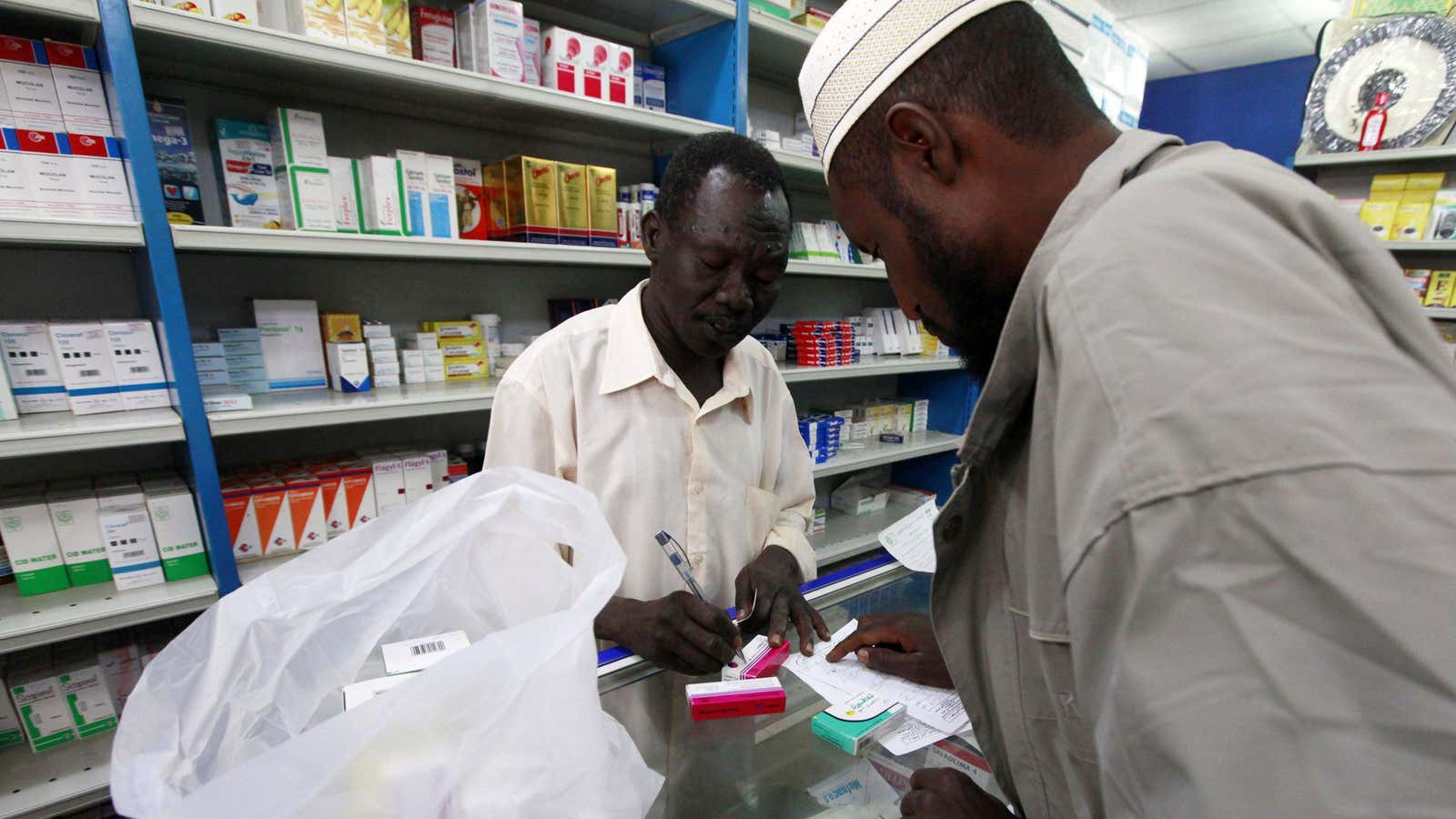Countries known for under-resourced health-care systems, like Saudi Arabia and Brazil, are catching up with the developed world when it comes to medicine usage, researchers at the IMS Institute for Healthcare Informatics found.
By 2020, these “pharmerging markets” are projected to account for two-thirds of the world’s medicine usage volume, mostly comprised of generic drugs, according to a report released today (Nov. 18) by the firm. And more than half of the world’s population will live in countries where medicine use will exceed one dose per person per day, up from 31% in 2005.
The shift reflects efforts to expand health systems in these regions, the report notes. For example, Saudi Arabia, which is expected to have the largest increase in medicine usage among emerging countries, has invested in making health care more accessible to its growing population (pdf) and implemented reforms to improve the quality of care in the country. IMS predicts that Brazil, Egypt, Bangladesh, Indonesia, Turkey, Colombia and Algeria will also make great strides in closing the usage gap with developed countries.
At the same time, total spending on medicines is forecasted to rise to $1.4 trillion dollars by 2020, a 30% increase from 2015. The boost will be driven mainly by new branded drugs in the developed world, as well as the growing use of generics in emerging regions. The US alone will be responsible for more than 40% of the world’s drug bill.
More than 225 new drugs are also estimated to enter the market between 2016 and 2020, and about one-third of those medicines will be designed to treat cancer.
